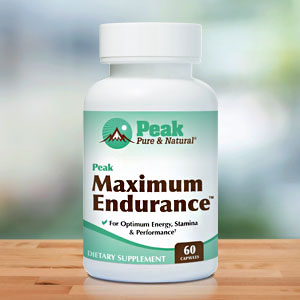Get Easy Health Digest™ in your inbox and don’t miss a thing when you subscribe today. Plus, get the free bonus report, Mother Nature’s Tips, Tricks and Remedies for Cholesterol, Blood Pressure & Blood Sugar as my way of saying welcome to the community!
NEAT: How capsaicin can help you burn fat

You may think that your body only burns energy when you’re doing vigorous, aerobic exercise like sports. But that’s not entirely the case.
Our bodies are constantly expending energy with even the smallest of movements. Every time you sleep, eat dinner, type on your computer or fidget in your seat, you’re burning energy.
Non-exercise activity thermogenesis (NEAT) is the term used for the energy the body uses for all activity apart from exercise, sleeping and eating. Even the simplest physical activities like walking to work, doing yard work or cleaning the house can substantially increase your metabolic rate, and thus result in a higher NEAT.
Researchers have found that agricultural and manual workers have high NEAT — while sitting in an office all day appears to lower NEAT. Interestingly, studies show NEAT increases with overfeeding and declines with underfeeding, indicating NEAT may be a critical component in gaining, losing or maintaining weight.
While the mechanism that regulates NEAT is unknown, researchers have identified some factors that directly impact NEAT. In fact, they have discovered a molecule that gives peppers their spice may play a key role in energy production and expenditure…
How capsaicin revs up the burn
Capsaicin, the compound responsible for the heat in spicy peppers, is not a great source of energy on its own. However, research has found it helps to trigger NEAT, delivering more energy to the body. Capsaicin also prompts the body to metabolize stored fat, which is then converted to energy.
This means capsaicin could help people who are trying to lose weight by improving their body’s fat- and calorie-burning efficiency as they take steps toward a healthier, more active lifestyle. Capsaicin could also deliver energy benefits to people who are already active, with small doses helping to improve exercise endurance and promote fat burning.
There are a few possible explanations for capsaicin’s effect on NEAT. One is that it triggers thermogenesis, or the expenditure of energy through heat, by stimulating a receptor known as TRPV1. Another is that capsaicin causes a rise in the release of neurotransmitters like epinephrine and dopamine as well as an increase in sympathetic nervous system activity, both of which lead to a rise in blood pressure. Capsaicin-induced thermogenesis may also result from stimulation of the beta-adrenergic receptors, which regulate heart function.
Getting more capsaicin in your diet
Adding capsaicin to your daily diet can be relatively straightforward: eat more peppers. As we’ve noted in previous issues, both hot and sweet peppers contain a good amount of capsaicin. The only type of pepper that doesn’t provide capsaicin is bell pepper.
So, if you can take the heat, feel free to load up on hot sauce and jalapenos, or add a healthy dash of cayenne pepper to your morning smoothie. And if you prefer milder flavors, try adding some cherry or cone peppers to your next meal.
If you’re simply not a fan of peppers, you can always get capsaicin through supplements. When choosing a supplement, make sure the capsaicin is from a reputable source and that the supplement has been tested for quality and safety.
As far as ways to boost your NEAT, the key is to cut back on the time you spend sitting motionless in a chair. Simple actions like standing and pacing while you talk on the phone, parking farther away from the door at work or taking the stairs instead of the elevator can train your body to ramp up its NEAT. Also, in an earlier article, we talked about ways you can make sitting more active.
Just by adding additional non-strenuous movement to your day, the payout could be well worth it. According to the Mayo Clinic, NEAT is helpful in decreasing cardiovascular disease mortality, improving metabolic parameters and decreasing symptoms of metabolic syndrome. It also has good long-term adherence, something we can’t always say for strenuous exercise.
Editor’s note: There are perfectly safe and natural ways to decrease your risk of blood clots including the 25-cent vitamin, the nutrient that acts as a natural blood thinner and the powerful herb that helps clear plaque. To discover these and other secrets of long-lived hearts, click here for Hushed Up Natural Heart Cures and Common Misconceptions of Popular Heart Treatments!
Sources:
Non-exercise activity thermogenesis (NEAT) — Best Practice & Research: Clinical endocrinology and metabolism
Non-exercise activity thermogenesis (NEAT): a component of total daily energy expenditure — Journal of Exercise Nutrition & Biochemistry
Capsaicinoids supplementation decreases percent body fat and fat mass: adjustment using covariates in a post hoc analysis — BMC Obesity
Acute Effects of Capsaicin on Energy Expenditure and Fat Oxidation in Negative Energy Balance — PLOS ONE
Use the NEAT factor (nonexercise activity thermogenesis) to burn calories — Harvard Health Publishing













